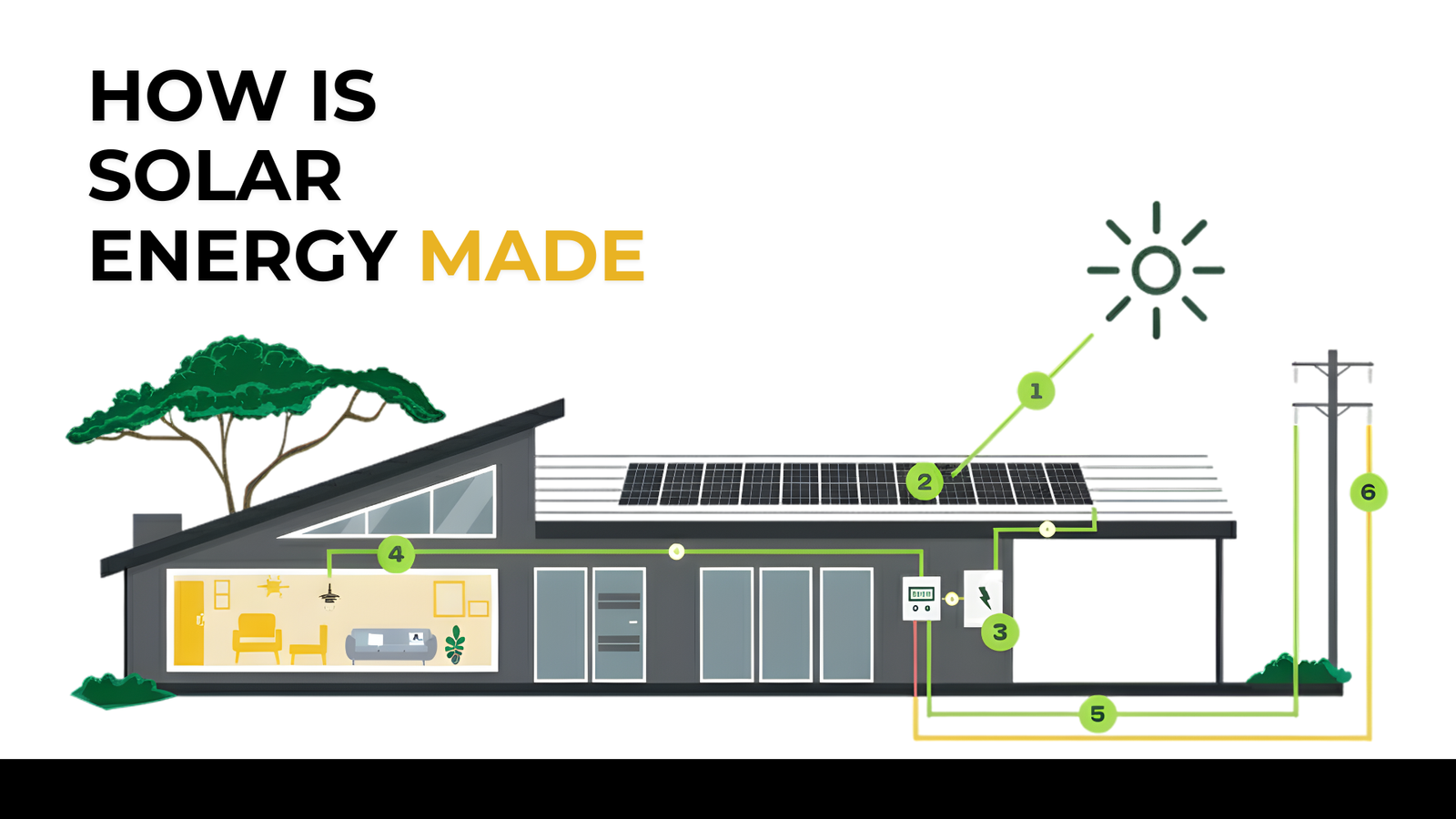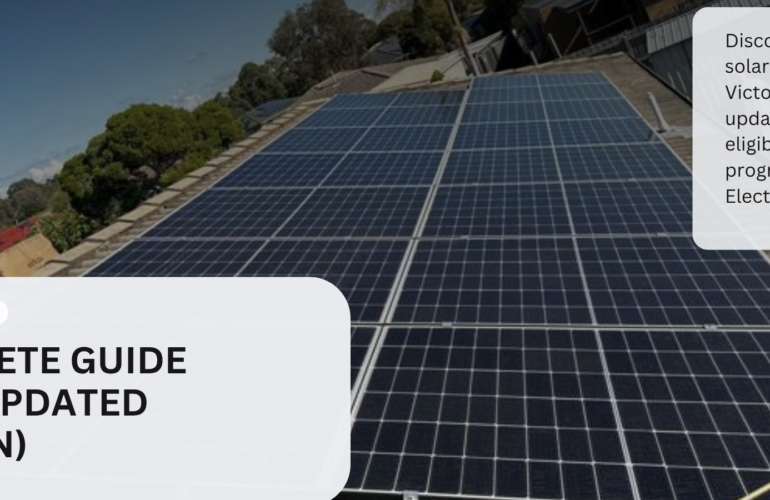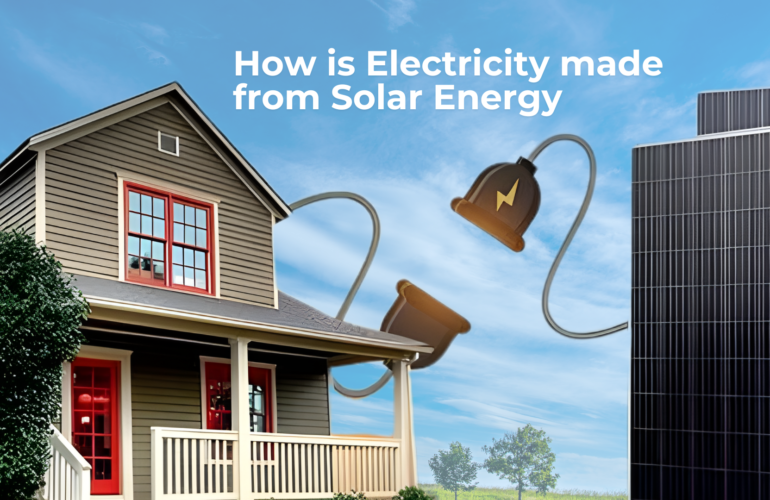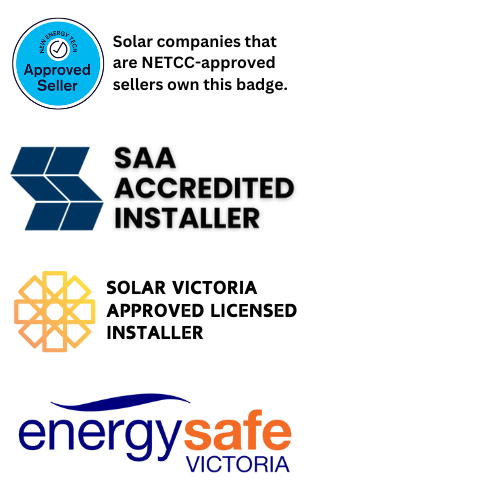How Is Solar Energy Made? Everything Australian Homeowners Need to Know
One of the first things you might want to know if you’re thinking about going solar is, “How is solar energy made?” It seems almost like magic that sunlight can power your home, charge your gadgets, and even run your air conditioner without using the grid. But the truth is that there is no magic. It takes science, engineering, and a smart design approach to turn the sun’s sunshine into power that can be used.
This simple guide will show you how solar energy is created, how it gets from the sun to your powerpoints, and why more and more homeowners in Australia are switching to solar electricity.
Get a Free Quote
What Solar Energy Really Is (Explained Simply)
Before we break down how solar energy is made, it helps to understand the meaning of “solar energy.”
Solar energy is simply the power we capture from sunlight. The sun constantly releases light and heat in the form of photons. When those photons hit a solar panel, a reaction begins—turning sunlight into clean, renewable electricity.
Unlike fossil fuels, solar energy:
- is unlimited
- produces zero emissions
- requires no fuel
- reduces your electricity bill
- works silently and safely
And because Australia receives some of the highest levels of solar radiation on the planet, we’re perfectly positioned to take full advantage of it.
The Complete Step-by-Step Process: How Is Solar Energy Made?
Now let’s dive into the main question how is solar energy made?
Solar energy goes through 5 major steps before it becomes usable electricity in your home:
1. Sunlight Hits the Solar Panels (Photon Absorption)
The first thing that happens is when the sunlight hits your solar panels. When sunlight hits the solar cells, the process that generates solar energy starts.
Photovoltaic (PV) cells composed of silicon are used to make solar panels. When photons from sunlight hit these cells, they knock electrons loose, which makes an electric charge.
Inside the solar cell is where solar energy starts to be made.
2. Solar Cells Generate Direct Current (DC)
Once the electrons in the silicon cells start moving, they create an electric current. However, this electricity is in DC (Direct Current) form.
Most household appliances—lights, TVs, ovens, fridges—cannot use DC power. They need AC (Alternating Current).
So while the solar panels have begun creating energy, the process of how solar energy is made is only halfway done.
3.The Inverter Converts DC to AC Power
The solar inverter is the most important part of the whole solar system.
The inverter changes the DC electricity from the panels into AC electricity. Your home and the grid can both use AC.
Modern inverters also:
- monitor your system
- track production
- ensure safety
- maximise performance
The solar inverter is the most important element in the entire solar system.
The inverter turns the DC power from the panels into AC power. AC can be used in both your home and the grid.
4.Electricity Flows Into Your Home
Once converted into AC, your solar power is ready to use instantly.
Your home always uses solar energy first because it’s free. This means during the day, your appliances are powered by the sun before they draw anything from the grid.
Anything your home doesn’t use will be either:
- exported back to the grid for a feed-in tariff, or
- stored in your solar battery (if you have one)
This is where solar begins saving you money every single day.
5.Extra Energy Can Be Stored in a Solar Battery
Adding a battery changes everything about how solar energy is made and used.
A solar battery allows you to:
- store excess electricity
- use solar power at night
- reduce your grid usage
- protect your home during blackouts (if you have backup mode)
In Australia—where electricity prices continue rising sharply—solar batteries have become extremely popular.
What Are Solar Panels Made Of? And Why It Matters
You should also know what solar panels are constructed of if you want to know how solar energy is made.
Most modern panels use:
- Silicon (monocrystalline or polycrystalline)
- Safety glass
- Aluminium frames
- Conductive metals (like copper and silver)
- Protective back sheets
Silicon is the key ingredient. It’s a semiconductor, which means it can either conduct or block electricity depending on how it is treated.
This makes it perfect for converting sunlight into electricity.
What Factors Affect How Solar Energy Is Made?
The performance of a solar system depends on several factors. Even though the sun is free, the way panels capture and convert that energy varies.
1.Panel Quality
High-efficiency panels generate more power using less sunlight.
2.System Design
Placement, tilt, and shading can dramatically change how much energy you produce.
3.Inverter Type
String inverters, microinverters, and hybrid inverters all impact performance.
4.Weather Conditions
Yes, solar works on cloudy days—but efficiency reduces slightly.
5.Temperature
Solar panels actually work best in cool, bright conditions.
Understanding these factors helps explain why one home may generate more solar energy than another—even if both receive similar sunlight.
Why Knowing How Solar Energy Is Made Helps You Make Better Decisions
Most homeowners think solar is just “panels on the roof,” but knowing how solar energy is made helps you:
- choose better-quality products
- avoid cheap, unreliable systems
- understand how to save the most money
- know what to expect from your solar performance
- make smart upgrades like a battery
- talk confidently with installers
In short, when you know how the system works, you make a better investment.
The Benefits of Solar Energy for Aussie Homes
Understanding how solar energy is made highlights why solar has become the fastest-growing energy source in Australia.
Here’s what solar delivers:
1. Massive Bill Savings
Solar cuts daytime electricity usage, saving hundreds to thousands each year.
2. Energy Independence
With a battery, you can run your home mostly on solar and reduce dependence on the grid.
3. Increased Property Value
Homes with solar systems often sell faster and for more.
4. Environmental Impact
Solar produces clean energy with zero greenhouse gas emissions.
5. Protection Against Rising Prices
Electricity prices in Australia keep going up. Solar locks in long-term savings.
How Much Solar Energy Can Your Home Make?
The amount of solar energy produced depends on:
- system size
- roof direction (north-facing is best in Australia)
- shading
- panel efficiency
- inverter capacity
- your location and climate
A typical 6.6kW system in Victoria can generate 20–28 kWh per day on average.
Larger systems (8kW–13kW) are now very popular for homeowners who want:
- EV charging
- battery storage
- lower grid reliance
- bigger bill savings
Common Myths About How Solar Energy Is Made
Myth 1: Solar only works in strong sunlight
Truth: Solar panels work even on cloudy days, though at slightly reduced output.
Myth 2: Solar panels store energy
Truth: Panels only generate energy. Batteries store energy.
Myth 3: Solar stops working in winter
Truth: Winter still produces plenty of usable solar power.
Myth 4: Solar is complicated
Truth: Once installed, the system runs automatically with no effort.
Final Thoughts: Solar Energy Is the Future of Aussie Homes
You now know everything there is to know about how solar energy is made, so you can make an informed decision about whether or not it is good for your home.
The procedure is easy, clean, and very effective, from sunlight reaching your roof to powering your appliances. Electricity rates are going up in Australia, therefore homeowners are choosing solar not only to save money but also to make sure they have energy for the future.
If you’re ready to look into the greatest solar option for your home, a well-designed system will make the most of every ray of sunlight and work well for many years.
Talk to Our Expert











